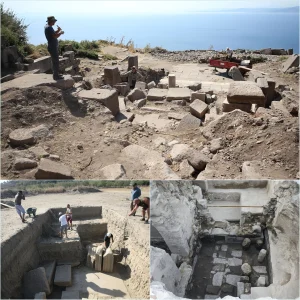For the first time in over 2,000 years, the contents of the sealed sarcophagus within the Tomb of Cerberus have been unveiled.

Discovered last year in Giugliano, near Naples, this vividly frescoed chamber tomb was examined using a microcamera. The imaging revealed a supine body covered by a shroud, surrounded by grave goods such as pottery vessels, unguentaria, and strigils.

The remarkable preservation of the burial is attributed to the unique conditions within the sealed chamber. The textile shroud had mineralized, providing a rare chance for detailed analysis. The careful construction of the tomb and the presence of significant grave goods suggest that the deceased was a notable individual, likely the head of the family for whom the tomb was built.

Dr. Simona Formola, the lead archaeologist overseeing the excavation, commented: “The Tomb of Cerberus continues to offer valuable insights into the Phlegraean area near Liternum, enhancing our understanding of the past and facilitating multidisciplinary research.” The site has attracted considerable interest and funding, including support from the Ministry of Culture, which has allowed for the continuation of excavations and restoration in the surrounding necropolis. Superintendent Mariano Nuzzo added: “Laboratory analyses of samples from the burials and depositional beds have provided significant data on body treatment and funerary rituals, greatly enriching our understanding.” This collaborative effort involves a diverse team of archaeologists, technicians, anthropologists, paleobotanists, and chemists, all working together to interpret the collected data.





